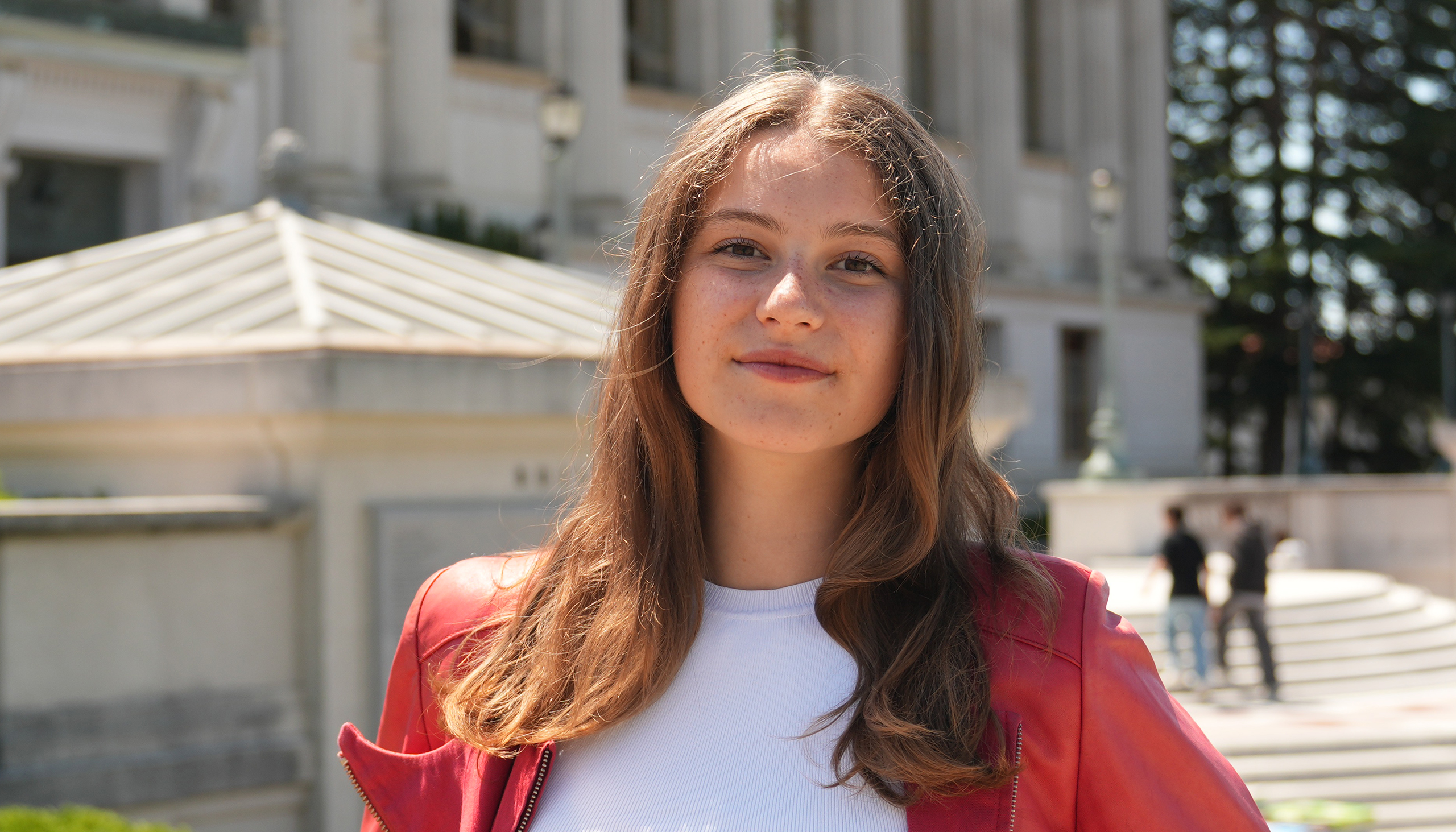Captivated by the science of stars, this new student seeks energy solutions for Earth
Read how incoming first-year student Inès Pajot plans to use her time at Berkeley to find new energy sources for our warming planet.

Stanley Luo/UC Berkeley
August 25, 2025
In this first-person narrative, incoming first-year student Inès Pajot tells UC Berkeley News about cofounding a climate coalition in high school and how her early interest in astrophysics will inspire her climate work at Berkeley.
I’m originally from Paris, and moved to London when I was 6. I remember learning about climate change in science class — really simple things, like the greenhouse effect. We also attended assemblies where school leaders would summarize all the decisions that had been made that year at the United Nations Climate Change Conferences. So I knew it was a problem, but it wasn’t at the forefront of my mind.
I started to become more interested in climate work in my 8th grade physics class through learning about how energy is generated. Later in secondary school, I became truly passionate about astrophysics. I was really interested in fusion, a natural process that happens in stars — it’s how the sun turns matter into energy, which is where we get all the radiation we have on Earth. I started looking into the different ways to produce energy, and then became interested in fossil fuels, both how they’re created and the effect they’re having on the environment.
I spent a year in the Bay Area when I was 16 when we moved here temporarily for my dad’s job. I attended a private school called The Nueva School in San Mateo. There was such a huge emphasis on sustainability, so I decided to hop on the train and get involved.
At The Nueva School, other students and I founded the High School Clean Energy Investment Coalition, an organization made up of students who work with their schools’ endowment boards to invest in renewable energy. It has grown to encompass more than 50 high schools and 11 countries around the world. The coalition is about providing high schoolers with the toolkit they need in order to research how schools can invest their money sustainably and make the changes that need to be made.
Going forward, I think I’ll still be involved with the coalition in a mentoring capacity. I’ve trained up some amazing high school seniors who I feel are fully capable to continue the project, and I’m excited to try something new in the climate sphere.
At Berkeley, I plan to work toward finding a clean energy solution. Right now, I’m most interested in fusion. There are people trying to create nuclear fusion power plants because one fusion reaction generates vast amounts of energy. If it’s realized, it would be a very big solution to climate change.
I could see myself using that work to try to build a company. But I don’t want to get ahead of myself; I’m very open to all different life paths. I’m going into it with an open mind.